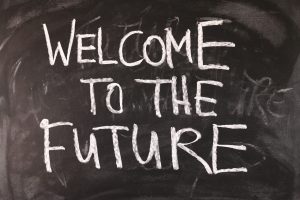Teach and reinforce

“Traumatised children expect the worst and focus on the negative. If you understand this, you will be better prepared for it.” – Dave Ziegler
Overview and learning objectives
Following on from chapter four, which explored attachment and the crucial importance of these earliest relationships, this chapter focuses on social emotional wellbeing and the relationships formed as children grow. A child’s first socialisation experience is through attachment with another. The social emotional needs of the child with trauma are substantial because as we know the early attachment experiences of a child in infancy, the relationships with the primary caregiver, and the nature of those relationships significantly impacts the quality of mental health (Bayat, 2015).
Teachers can do much to forge strong connections with the child, build connections between the child and the people in the school, build connections between the school and the child’s world beyond the school, and validate the child as a person worthy of care. Connecting and validating helps the child to feel connected and begin to feel a true sense of belonging.
On successful completion of this chapter, you should be able to:
- Understand the nature of social-emotional competence
- Provide examples of some social-emotional skills necessary for children’s wellbeing
- Explain challenges in supporting the social-emotional needs of children with attachment difficulties
- Name key teaching strategies for promoting social-emotional competence
- Understand the key elements of Social Cognitive Theory
Introduction
Trauma impacts development disrupting cognitive, physical, and social and emotional development. Living in a constant stressed state of fear and heightened anxiety is toxic to the body and with every ounce of energy focussed on survival, the child with trauma has
little space left to learn or the capacity to be a social, regulated person. This struggle is for many children with trauma, seen most clearly in difficulties with relationships, friendships and behaviour. Remember that the chronological age of the child with trauma does not often match where they are developmentally, so when implementing strategies to help, it is the developmental age and capacity of the child that needs to be considered first and foremost. Teachers make mistakes, miss the signs, reflect on their own behaviour that sometimes they deem as not helpful and things go wrong. When bad situations and days happen, it is important that relationships are repaired, and we keep moving forward with our ‘best effort’.
“It will take me a longer while to catch up with myself, so don’t be fooled by my age”(Bomber, 2009, p. 52).
Bomber (2009) reminds us that fundamental to forming strong relationships with traumatised adolescents is to ensure we keep them in mind. This is how we help the child to gain a sense of emotional stability. Ideally, the person providing the secure base would be able to do so in the long term (for several years), committed to genuine helping and the willing surrender of their time. The adolescent with trauma (just like some children with trauma) quite likely does not have the skills to form relationships. Further, they tend to misread the signs inherent in comments, body language and tone of voice, reacting in ways (for example using aggression) that are totally understandable if you live your school day looking for threats but unacceptable within the school context. Moreover, they are often aware that they do not ‘do relationships’ as well as others and this further adds to their feelings of poor self-esteem and self-worth.
Many children with trauma lack an understanding of the skills that are needed to establish and maintain relationships, and this results in them having few friends. Behaviour such as being overtly controlling (the child with trauma has had no control over things that have happened to them), not taking turns, aggression and showing little empathy for others. The period of adolescence is one of comparison with others. For the adolescent with trauma, when they compare their life to others, their life (and I quote) ‘sucks big time!’ Developing social-emotional competence helps fill the gaps from disrupted relationships and makes the life of the child with trauma ‘suck a little bit less’.
References
Bayat, M. (2015). Addressing challenging behaviors and mental health issues in early childhood. New York, NY: Taylor & Francis.
Bomber, L. M. (2009). Survival of the ‘fittest’…Teenagers finding their way through the labyrinth of transitions in schools. In A. Perry (Ed.) (2009). Teenagers and attachment. Helping adolescents engage with life and learning (pp. 31-62). Richmond, London: Worth Publishing.

